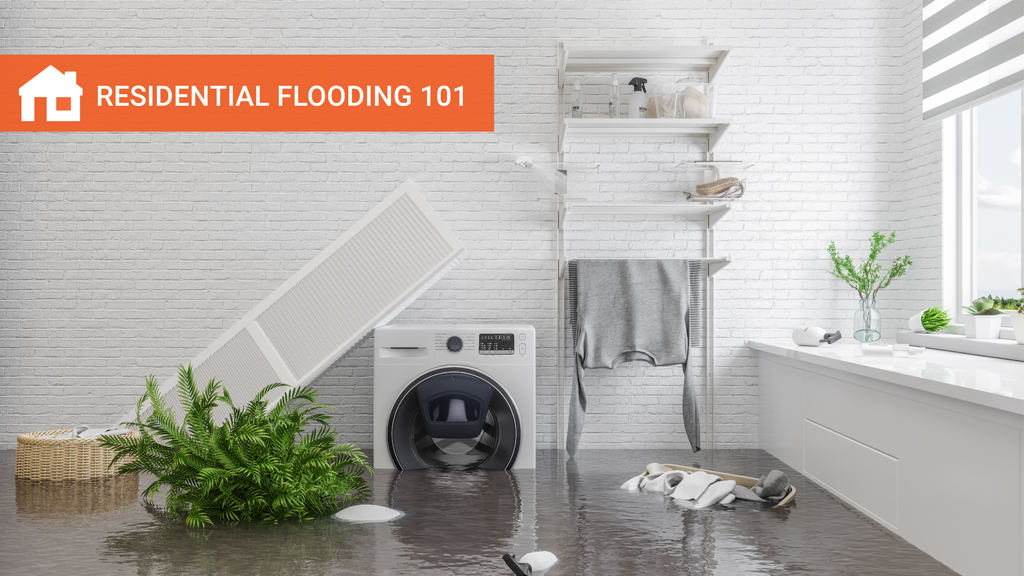
The summer of 2024 brought severe storms like Beryl and Debby, causing record rainfall and unprecedented flood damage in many parts of Quebec and Ontario. These extreme weather events are happening more frequently, leaving municipalities and governments scrambling to rethink infrastructures. However, while long-term solutions are being devised to upgrade city water systems, it’s essential for homeowners to take proactive steps to safeguard their homes from flooding. In this post, we’ll explore crucial strategies that can help you protect your property from future water damage.
What Are the Long-Term Consequences of Flooding for Homeowners?
Flooding can have lasting effects that go beyond the initial water damage. Homeowners may face:
- Structural Deterioration: Prolonged exposure to water can weaken the foundation and other structural components of a home.
- Mold Growth: Mold can develop quickly in damp environments, posing serious health risks and damaging the property.
- Loss of Property Value: Homes that have been exposed to flooding often see a drop in market value due to potential long-term issues.
- Insurance Challenges: In high-risk areas, homeowners may find it more expensive or difficult to obtain flood insurance, further complicating recovery efforts.
Given these risks, it is essential to adopt preventive measures to protect both your home and your investment.
Key Preventive Measures to Avoid Flood Damage
With increasingly severe rainfall and urban water overflows, taking steps to manage water infiltration is critical. Here are some of the most effective strategies for protecting your home:
1. Install Backflow Prevention Valves
Backflow prevention valves are vital for preventing sewage from flowing back into your home during heavy rainfall. Consider installing double-check valves in your basement to ensure a superior seal and better protection.
2. Maintain Your Sump Pumps
Sump pumps play a crucial role in removing water from around your home’s foundation. Regularly test and maintain them to ensure they function correctly when you need them the most.
3. Check Gutters and Drains
Clogged gutters and drains can cause water to accumulate around your home’s foundation, leading to leaks and potential flooding. Make sure to clear your gutters regularly, particularly in the spring and fall, and install gutter extensions to divert water away from your property.
4. Grade the Ground Around Your Home
If water tends to pool near your home, consider grading the ground around your property to direct water flow towards the street. This will help keep water away from your foundation and reduce the risk of infiltration.
5. Install Window Well Drains
Homes with basement windows close to ground level can benefit from the installation of drainage curbs. These help prevent water from seeping into your basement during heavy rains.
Medium-Term Strategies to Protect Your Home
In addition to these immediate preventive measures, homeowners can benefit from medium-term strategies that ensure continued protection:
1. Regular Inspections by Professionals
Having a professional building inspector or plumber assess your home periodically can help identify any underlying issues with foundations, pipes, or drainage systems. Early detection and proactive repairs can save you a lot of trouble in the event of a flood.
2. Know Your Property’s Flood Risk
Understanding the flood risk level of your property is critical for effective preparation. This knowledge can help you anticipate potential issues and provide peace of mind for future buyers should you decide to sell your home.
Long-Term Solutions for Increasing Climate Risks
As climate change leads to more frequent and severe weather events, homeowners must consider long-term solutions:
1. Choose the Right Location
If you’re in the process of buying a home, research the neighborhood’s history of flooding. Avoid areas with a high risk of floods, or be prepared to invest in additional protective measures.
2. Landscape for Better Drainage
Consider landscaping changes to improve drainage around your home. Raising the ground around your house or installing better drainage systems can significantly reduce the risk of water accumulation and infiltration.
3. Consult with Experts
Before making significant modifications, consult with an engineer or a building inspector. They can assess the feasibility of major changes like raising your property’s elevation or improving overall drainage.
Conclusion
The severe flooding experienced in Quebec and Ontario in 2024 has once again demonstrated that no property is immune to the effects of extreme weather. Homeowners must take proactive steps to protect their investments by implementing preventive measures, from backflow prevention valves to regular inspections by professionals. While larger infrastructure changes are underway to address flood risks on a municipal level, individuals can play a significant role in safeguarding their homes. By adopting these strategies, you can better protect your property, maintain its value, and contribute to a more resilient community in the face of climate change.